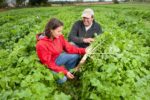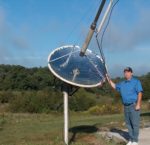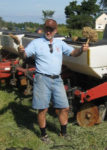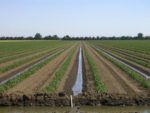Showing 21-30 of 50 results

Raising Locally-Adapted and Disease Resistant Queens in Illinois
It is no secret that we are losing bees at higher rates than ever before: On average, beekeepers lose 33 percent of their hives each year. This unfortunate occurrence is known as Colony Collapse Disorder, caused by many different factors such as disease, the varroa mite, pesticide poisoning and habitat loss. And while most […]

Integrated Pest Management in Alabama
Organic vegetable growers in the Deep South face a constant battle with pests. In Alabama, new information is leading to better crop protection and more profitability, thanks to the work of Ayanava Majumdar, Alabama Extension entomologist and Southern SARE state coordinator. As a SARE state coordinator, Majumdar is tasked with bringing sustainable agriculture information […]

Improving Nutrient Use Efficiency in Montana Wheat
"This was a landmark study because we knew we were losing nitrogen, we just didn't know how we were losing it," says farmer Curtis Hershberger. When nitrogen fertilizers are applied to the soil surface using certain application practices, a significant amount can be lost when the nitrogen converts to ammonia gas and enters the atmosphere. […]

For Vegetable Farmers, a New No-Till Tool in Forage Radish
Vegetable farmers who want the myriad benefits of winter cover crops may be setting themselves up for a hectic spring schedule, when the challenge of planting during a narrow window of good weather becomes more complicated by the need to first terminate that winter crop. To make their lives a little easier, University of Maryland […]

From Fruit to Fuel
As tree fruit growers know well, annual harvests do not remove all the fruit from the orchard. A great deal is left behind littering the orchard floor. While pondering his fruit waste problem, Dan West of Macon, Mo., who grows apples, peaches, apricots, nectarines, plums and pears, hit upon a novel approach: Why not turn […]

No-Till and Cover Crop Innovations Increase Dairy Profits
Summertime for dairy farmers in New England is anything but slow. Silage corn must be planted and harvested in a short window to provide high-quality forage for cattle, leaving little time to plant cover crops to replenish the soil. Under pressure to get corn planted early, farmers may delay the first cutting of hay, sacrificing […]

Water Use Efficiency in Tomatoes
University of California at Davis graduate student Felipe Barrios-Masias and Professor Louise Jackson saw promise in alternative irrigation methods that could use less water but still produce high yields, leading to increased agricultural sustainability and efficiency. Until successfully obtaining Western SARE funds, they were finding it difficult to receive funding for the on-farm research. However, […]
Exploring Energy Efficiency and Alternatives Curriculum
According to Sarah Hamlen, Montana State University Extension, and Milton Grieger, University of Wyoming Extension, Western producers’ profitability is closely linked to the consumption and production of energy resources. Decisions made by these producers on energy issues have long-term implications for the sustainability of agricultural production, they assert. To increase producers’ knowledge of energy issues, […]

Good Natured Family Farms Brings Together Producers and Local Businesses to Market Local Foods
Good Natured Family Farms is an alliance of more than 150 family farms and small businesses in the Kansas City, MO area. They sell products under the Good Natured Family Farms’ logo in Balls Food Stores in the Kansas City Area. Their selection of products encompasses all-natural beef, free-range chickens, free-range brown eggs, farmhouse cheeses, milk, eggnog, […]
Researchers and Educators Collaborate to Teach Youth about Cover Crops
Across the region, farmers are planting cover crops, a method of revitalizing soil, curbing erosion, and managing pests. Steve Sutera, an Extension educator at South Dakota State University (SDSU), saw an opportunity to bring together Bon Homme County’s Extension service, FFA Chapter, 4-H Club, and ongoing research at SDSU. In 2008, Sutera submitted a proposal […]